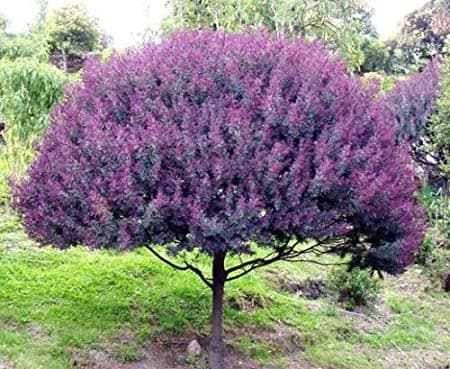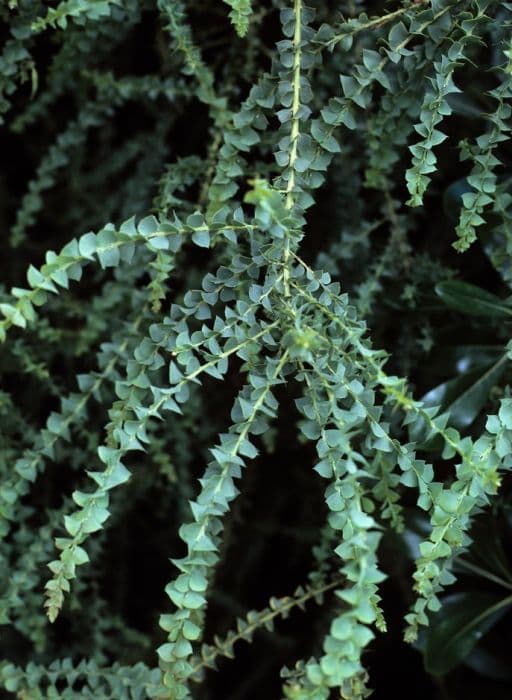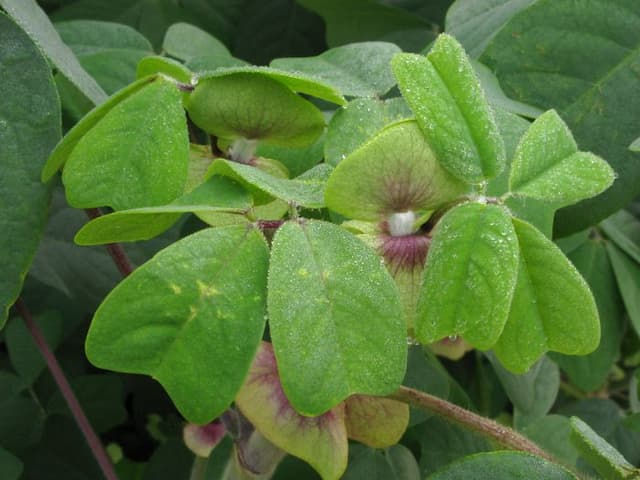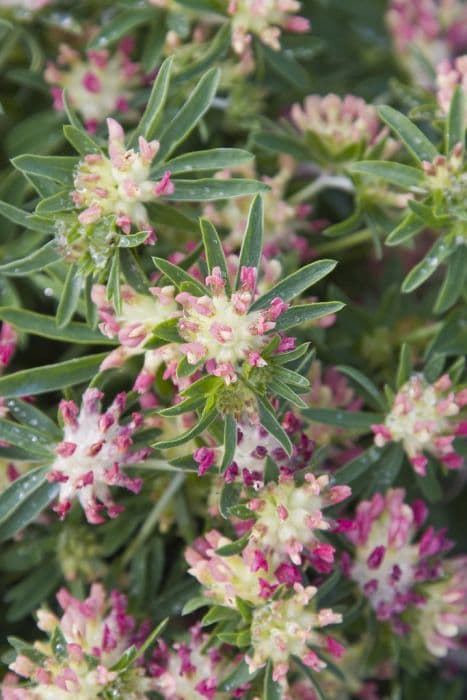Pea Pisum sativum 'Avola'
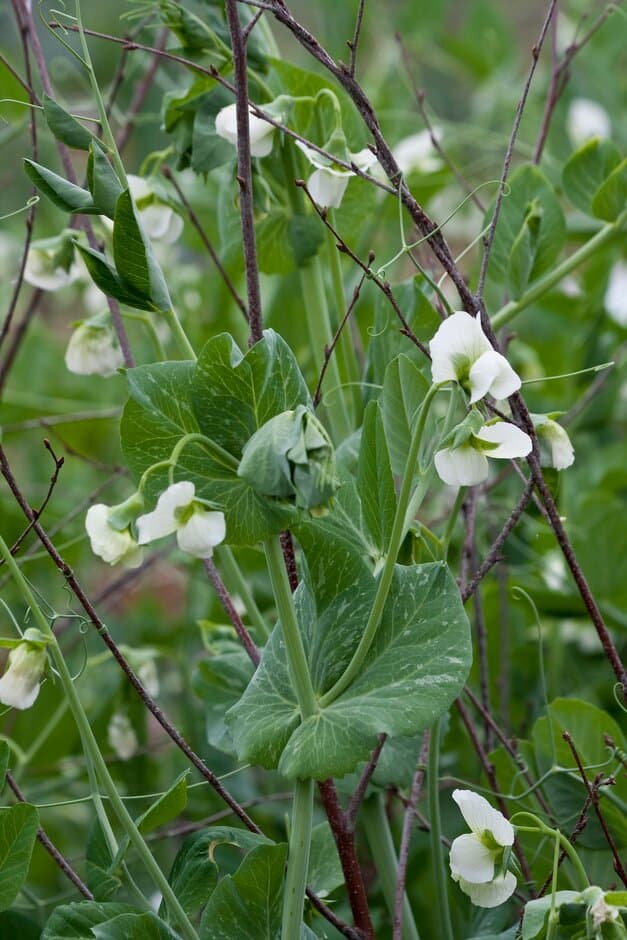
ABOUT
Pisum sativum 'Avola' is commonly known as the pea plant. The pea plant has a climbing habit with tendrils that help it attach to supports and climb. Its stems are slender and often have a green hue that blends in with the foliage. The leaves of the pea plant are compound, with multiple leaflets and a central tendril emanating from the end of the leaf stalk. The foliage of the pea plant 'Avola' is bright green, and the plant is known for its dense growth of leaves, which create a lush appearance. Vibrant flowers are produced, which not only add a decorative touch but also precede the formation of pods. These flowers are typically white, though they can sometimes have a delicate pinkish or purplish hue. Following the flowering stage, the plant produces its recognizable pods. The pods are typically plump, smooth, and have a vibrant green color. Inside these pods, the peas themselves are nestled in a row, snug within the pod's protective casing. The peas are round, plump, and also a bright green color, similar to the pods and the foliage. Overall, the appearance of the pea plant 'Avola' is one of vibrant green tones and lush, leafy growth, adorned periodically with white flowers leading to the production of its characteristic green pods housing the peas.
About this plant
 Names
NamesFamily
Fabaceae
Synonyms
Garden Pea, Green Pea, English Pea, Sweet Pea
Common names
Pisum sativum 'Avola'.
 Toxicity
ToxicityTo humans
Pea 'Avola' is not considered toxic to humans. It is a variety of garden pea that is commonly consumed as a vegetable. The parts typically eaten are the peas themselves, either fresh or dried, and sometimes the young pods when they are tender. There are no common toxic effects from eating peas 'Avola' for humans when consumed as a food plant. However, like any food, it may cause gastrointestinal discomfort if eaten in excessive quantities or if an individual has a specific allergy to legumes.
To pets
Pea 'Avola' is generally considered safe for pets as well. It is a type of garden pea, and peas are often used in pet foods due to their nutrient content. However, parts of the plant other than the peas, such as the stems and leaves, can cause mild gastrointestinal upset in some pets if consumed in large quantities. It is always best to feed pets peas in moderation and consult with a veterinarian if you have any concerns about introducing new foods to your pet's diet.
 Characteristics
CharacteristicsLife cycle
Annuals
Foliage type
Deciduous
Color of leaves
Green
Flower color
White
Height
2 feet (60 cm)
Spread
1 feet (30 cm)
Plant type
Herb
Hardiness zones
3
Native area
Mediterranean
Benefits
 General Benefits
General Benefits- Early Harvest: Pisum sativum 'Avola' is known for its early maturity, allowing for an earlier harvest compared to other pea varieties.
- Nutritional Value: It is a good source of vitamins, minerals, and dietary fiber, contributing to a balanced diet.
- Food Security: As a legume, it can improve soil fertility by fixing nitrogen, hence benefiting subsequent crop yields and supporting sustainable agriculture.
- Easy to Grow: Peas are generally easy to cultivate and can thrive in a variety of climates, making them accessible to many gardeners.
- Economic Benefit: Growing peas can potentially reduce grocery bills, as they can be harvested and consumed straight from the garden.
- Culinary Versatility: The peas can be used in numerous dishes, from soups and salads to purees and side dishes, offering culinary diversity.
- Pollinator Friendly: The flowers of the pea plant attract bees and other pollinators, supporting local ecosystems.
- Compact Growth: This variety is suitable for small gardens or container growing due to its compact size.
- Educational Value: Growing peas can provide educational opportunities for children and adults to learn about plant biology and gardening.
 Medical Properties
Medical Properties- This plant is not used for medical purposes.
 Air-purifying Qualities
Air-purifying QualitiesThis plant is not specifically known for air purifying qualities.
 Other Uses
Other Uses- Pea straw from 'Avola' can be used as mulch to conserve moisture and suppress weeds in garden beds.
- The dried vines of the pea plant make an excellent addition to compost piles as they add nitrogen to the compost mix.
- Green dye can be extracted from the leaves and pods of peas to color fabrics and yarns naturally.
- Pisum sativum 'Avola' can be used to create natural plant supports for other climbing plants, using the sturdy vines as a lattice.
- Pea pods, after the peas have been harvested, can be turned into a natural peat-free potting mix component for seed starting.
- The flowers of the pea plant can be used in floral arrangements to add a touch of country charm to bouquets.
- Unripe pea pods can be pickled just like cucumbers to create a crunchy and tangy snack.
- During crop rotation, planting 'Avola' peas can help to break up soil-bound pests and diseases, preparing the soil for the next crop.
- Partially decomposed pea plants can be laid down as a "green manure" to improve soil structure and fertility.
- Pea tendrils from the 'Avola' plant can be harvested as an edible garnish for salads and gourmet dishes, offering a fresh, pea-like flavor and delicate texture.
Interesting Facts
 Feng Shui
Feng ShuiThe pea is not used in Feng Shui practice.
 Zodiac Sign Compitability
Zodiac Sign CompitabilityThe pea is not used in astrology practice.
 Plant Symbolism
Plant Symbolism- Prosperity - Peas have been a staple in diets for thousands of years, representing food security and the idea of a bountiful harvest.
- Renewal - As an annual plant that is sowed in cool seasons and harvested in the warm months, peas symbolize the renewal and the cycle of life and growth.
- Nourishment - Peas are a nutritious vegetable packed with vitamins and minerals, thus symbolizing health and nourishment for the body and soul.
- Foundation - The pea plant, with its ability to enrich soil with nitrogen, represents a strong foundation and support for future growth.
- Unity - Peas often grow in pods containing multiple peas, symbolizing unity and the strength found in numbers or togetherness.
 Water
WaterThe common name of Pisum sativum 'Avola' is garden pea, and it should be watered deeply once a week, providing about one to one and a half gallons per square yard, depending on the weather conditions. It's best to water the plants in the morning so that the foliage has time to dry before the cooler evening temperatures. Avoid overhead watering to minimize leaf wetness and reduce the risk of disease. During hot, dry spells, you might need to water more frequently; always check the soil moisture level first to ensure it has partially dried out before watering again.
 Light
LightGarden peas thrive in full sun; they need at least 6 hours of direct sunlight each day to grow well. Position them in a spot that receives early morning light, which is less intense, to help them establish without the stress of midday heat. They can handle partial shade but may not produce as plentifully as those in full sun.
 Temperature
TemperatureGarden peas prefer cool weather and grow best when the daytime temperatures are between 55°F and 65°F. They can tolerate temperatures down to 28°F without damage and should not be exposed to temperatures above 75°F for sustained periods as this may hinder their development and lead to poor yields. The ideal growing conditions for garden peas are cool to moderate temperature ranges, avoiding the extremes of both cold and heat.
 Pruning
PruningPruning is not generally required for garden peas as they are annual plants that complete their life cycle within one growing season. However, removing any damaged or diseased foliage as it appears can help promote better air circulation and plant health. The best time for any necessary pruning is when the vines are dry to prevent the spread of disease.
 Cleaning
CleaningAs needed
 Soil
SoilPeas (Pisum sativum 'Avola') thrive in well-draining, loamy soil rich in organic matter with a pH between 6.0 and 7.0. A balanced mix can be achieved by combining two parts garden soil, one part compost, and one part perlite or sand to ensure proper drainage.
 Repotting
RepottingPeas, including the 'Avola' variety, are typically grown as annuals, so they do not require repotting. They are sown directly in the garden or in containers and are not repotted throughout the growing season.
 Humidity & Misting
Humidity & MistingPeas, such as the 'Avola', are adaptable to a range of outdoor humidity levels and do not require specific humidity conditions. They will grow well in the natural outdoor humidity in most temperate climates.
 Suitable locations
Suitable locationsIndoor
Ensure sufficient light, cool temperature, and stake for support.
Outdoor
Plant in full sun, support with stakes or netting.
Hardiness zone
3-11 USDA
 Life cycle
Life cyclePisum sativum 'Avola', commonly known as pea 'Avola', begins its life cycle as a seed, planted typically in cooler seasons as it is frost-hardy. Germination occurs within 7-14 days if the soil temperature is between 4-20°C (39-68°F), leading to the emergence of the radicle and plumule. As the plant grows, it develops a vine structure with climbing tendrils and compound leaves, requiring support for optimal growth. Flowering occurs within approximately 60 days, yielding white or pink flowers that self-pollinate to produce pea pods. The pods mature on the plant, taking on average 70 to 80 days from planting to reach harvestable size, each pod containing several round to slightly curved peas. After harvesting, if pods are left to dry on the plant, seeds can be collected for future planting, completing the life cycle.
 Propogation
PropogationPropogation time
Spring-Early Summer
Pisum sativum 'Avola', commonly known as the garden pea, is typically propagated by seed. The most popular method of propagation for this plant involves directly sowing seeds into the garden. The optimal time for sowing pea seeds is in early spring as soon as the soil can be worked, which helps ensure a full growing season. Gardeners should plant seeds about 1 inch deep and 2 inches apart in rows that are spaced about 18 to 24 inches apart. Peas thrive in cooler temperatures, so another batch can be sown in late summer or early fall for a second harvest in areas with a mild climate. It's important to provide support for climbing varieties, such as a trellis or fence, at planting time, which will support the vines as they grow.
